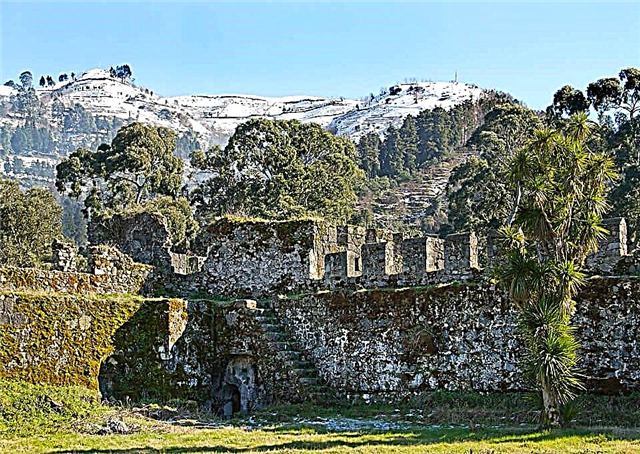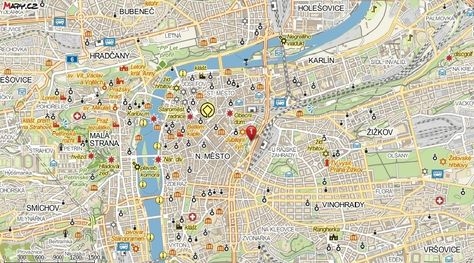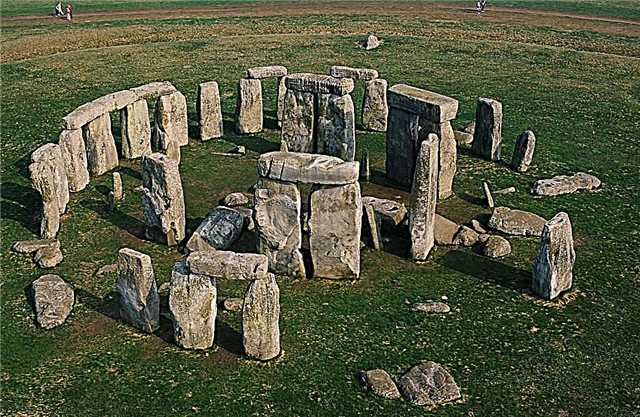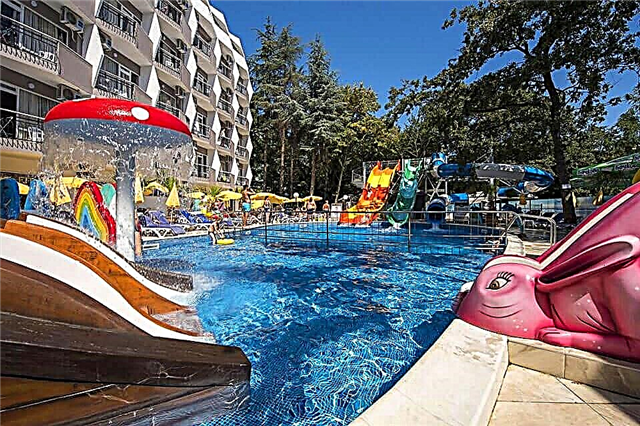Address: Greece, 5 km from Corinth
Main attractions: temple of Apollo, Roman baths, Amphitheater
Coordinates: 37 ° 54'21.7 "N 22 ° 52'44.9" E
Content:
Short description
Most travelers visiting Greece in order to get acquainted with a huge number of sights, historical monuments and architecture of the ancient people, first of all, go to Athens.

Ancient street
However, according to most guides, this route is not correct for people interested in the history of Greece. It cannot be said that there are few ruins, ancient temples and sanctuaries in Athens and the surrounding area. Not at all, but it would be more correct to start acquaintance with Ancient Greece from the city of Corinth, which, according to historians, is the first settlementthat appeared on the territory belonging to the modern European state.
Surprisingly, the name Corinth is not one city, but two, the distance between them is just over three kilometers. The first Corinth is the oldest city, and the second, relatively recently rebuilt, "only" at the end of the 19th century. The most attractive for a person interested in the sights and ruins of temples that were built before our era is undoubtedly old Corinth. It is considered a "natural" museum, where numerous exhibits are located directly in the open air.

Ruins of an ancient city
If paths-roads lead a tourist to ancient Corinth, then he should know that this "dead" city is separated from the capital of modern Greece by a distance of almost eighty kilometers. It will take less than an hour and a half to get to Old Corinth by car... However, almost the same number of rides to the city-museum and a sightseeing bus. The once mighty and wealthy Corinth is located on the Isthmian isthmus. If you look at the ruins of Corinth, which was left behind by the strongest earthquake that occurred in 1858, from a bird's eye view, you can immediately draw a certain conclusion. In ancient times, the city was of great strategic importance - from its ports it was possible to leave at once into two gulfs of the Aegean Sea: Corinthian and Saronic.
Ancient Corinth - the foundation and origin of the city's name
Speaking about the foundation and origin of the name of the most ancient city, it should be immediately noted that the versions put forward by modern historians are mostly based on archaeological excavations, which, by the way, began in Greece only at the dawn of the 20th century. Alas, there are too few documents, chronicles and descriptions of the city by ancient travelers to speak with confidence about the origin and purpose of the ruins of a building located on the territory of old Corinth. However, modern technologies, the tireless and painstaking work of archaeologists, made it possible to assume that the first settlers appeared here as early as 6 thousand years (!) BC.

There are even myths that tell about the origin of the city's name. According to the first legend, the settlement was founded by the ancient king of Corinth, who was born from the love affair of the daughter of a titan named Ocean and the god Helios, often referred to as Ether. The second myth says that the city of Corinth was created by Sisyphus. The same legend tells that it was in Corinth that the well-known Argonaut Jason left the beautiful Medea, who went mad with grief and burned the city. By the way, even if you have the courage to assume that this myth is not fiction, then Corinth burned in those days far from the last time. This ancient city was too "tidbit" for numerous conquerors.
More reliable sources that could tell about the origin of the city's name have not been found today. It could not be otherwise: the numerous seizures of Corinth, devastating earthquakes destroyed most of the ancient chronicles and buildings that could shed light on the history of the city during the Neolithic.

Temple of Apollo
Corinth - the history of the rise and fall of an ancient city
As mentioned above, Corinth had two important ports that allowed its merchants to enter the sea bays... This could mean only one thing: the townspeople could trade successfully, which means they were provided with everything they needed. It is worth noting that before the capture of Corinth by the Romans, he was more influential and powerful than the great Athens. If in Athens the sages talked about the destiny of man in this world, and in Sparta the warriors improved their martial art and, often, died en masse in bloody battles, then the Corinthians were much more pragmatic: they conducted uninterrupted trade with neighboring cities and even other countries.
In addition, there is confirmed evidence that in the 7th century BC, during the reign of Periander, the city even founded its own colonies, in particular, a colony in Albania. Corinth was also one of the nine powerful cities that created the colony of Navcradit, which allowed trade with Ancient Egypt. An interesting fact is that some historians attribute Periander to the legendary "seven wise men". It was he who tried to be the first to dig a channel that would connect the Saronic and Corinthian Gulfs.

In fairness, it is worth clarifying that the ancient ruler did not succeed. Looking far ahead, I would like to say that the idea of Periander was realized only in 1893. After the reign of Periander, the city experienced a heyday. Even an ancient saying has survived to this day, which roughly says: "Not everyone can sail to Corinth." It can only be interpreted in this way: in a luxurious city, the most powerful in all of Ancient Greece, life was very dear. Only a native of Corinth or a wealthy guest could afford to enjoy all the benefits.
In Corinth, the beautiful temple of prostitutes rose and led everyone to admiration ... Yes, yes, you heard right at all, it was the temple of prostitutes! This is not surprising, because this profession is much older than Corinth itself. This temple was dedicated to the goddess Aphrodite, who, as is known from ancient Greek myths, was the patroness of love, including carnal love.

Amphitheater
The people of Corinth managed to think everything over so much that they practically did not have to work. According to some reports, the indigenous population of ancient Corinth was neither more nor less - 300 thousand people, which at that time was for Greece something from the realm of fantasy. More than half a million (!) Slaves provided them with a comfortable life.
If you pay attention to the history of any city, or even an entire empire, you will notice that the period of greatest prosperity always precedes decline. Became no exception and the city of Corinth, which was destroyed by the Roman strategist and great warrior Lucius Mummy of Achaean... In addition to his talent, which allowed him to conquer cities and states, the military leader had a penchant for cruelty: he massacred all the men in Corinth, and sold young girls, women and their children into slavery. The city with its temples, two ports and a mass of residential buildings was simply destroyed and burned by the tyrant.

After Lucius Mummius of Achaea, the city, which was beginning to rebuild and "revive" again, began to be haunted by failures. We can say that the gods themselves were angry with Corinth: the most terrible earthquakes, which occurred in 375 and 551, wiped out all the buildings of the Corinthians from the face of the earth. In 395, the conqueror Alaric plundered the city again, killed most of its inhabitants, and miraculously survived, sold them into slavery. In the 13th century, Corinth, like many other Greek cities, became part of the Ottoman Empire. Only in 1830, almost completely destroyed Corinth, during the war of independence, which lasted almost nine years, again gets a chance for independence.
It is worth noting that in 1833, it was Corinth that they wanted to proclaim the capital of free Greece, which was patronized by Germany. This fact suggests that Corinth, despite the destruction and plundering, still had a strategic importance for the whole of Greece. But, as everyone knows from history, a small and sparsely populated settlement called Athens became the capital of the Greek Kingdom.

Roman Baths
All of the above is just a small part of the long and confusing history of Corinth, the oldest city in Greece. It is unlikely that it will be possible to describe it all in one material, and many of the opinions of historians at the moment are not yet supported by facts, but rely, as already mentioned, only on the finds of archaeologists. Exhibits dug out of the ground during excavations can talk about the culture, life, beliefs of the ancient people who inhabited the city, and even about the times of barbaric looting. However, they cannot in any way confirm with utmost accuracy this or that important date relating to the ancient history of Corinth.
The ancient city of Corinth today
If you look now at ancient Corinth, then it resembles not a once majestic and powerful city, but an archaeological site where experts conduct their work. Thanks to their efforts, today you can see the ruins of a huge structure of the Agora, which included 71 Doric columns from the outside. This building, without exaggeration, even today can be called truly huge. Only in its rear part there were 66 shops, 31 of them contained wells, the depth of which often exceeded 10 meters. All of them were connected to a channel that was of natural origin. What these wells were used for is not known for certain. Most likely, they stored food that quickly perishes due to the high temperature.

A tourist strolling among the ancient ruins will discover the ruins of the temple, which many call the Sanctuary of Apollo. There are too few facts suggesting that this structure was erected in honor of the god of predictions and arts: a small tablet was found on the site of the ruins, on which the name of the god was engraved, and a description of the traveler Pausanias, dating back to the 2nd century BC ... The Temple of Apollo (and maybe another deity) was not touched even by the Romans when they completely rebuilt Corinth. According to archaeologists, only a devastating earthquake did not spare him.
In addition to the ruins of the Agora, the Temple of Apollo, you can see two main streets of the ancient city, which, as you might guess, do not belong to the ancient history of Corinth, but were built under the leadership of the Romans.... Without exception, all lovers of architectural monuments will be interested in the Glavka fountain. It is unique because pipes were used to supply water to a spring located in the south of the city. Who and when built this amazing fountain, as well as the north-west and west shops, is not yet known: historians still have fierce disputes among themselves about these architectural structures. By the way, the Glavka fountain in ancient Corinth is not alone: you can see the Pirin fountain there. Much more is known about him. It was presented to the Corinthians by a wealthy resident of Athens, Herod Attica. The Pirin fountain threw up streams of water from a natural source, without which it would now be impossible to imagine the existence of a new Corinth.

In front of the ruins of the city-museum in the open air, various sculptures found on its territory are exhibited for all to see. It is worth remembering that the entrance to ancient Corinth is paid: the ticket price is 6 euros. Before visiting it, you should definitely take care of the presence of drinking water and an umbrella from the sun in your travel bag: you will not find operating shops among the ruins of Corinth, as well as shaded areas.











